South Korea Through the Senses
Part 2—Sound, Touch & Sight
Guest Post by Vasavi Koka
This is Part 2 of a 2-part series. Read Part 1: Sensing South Korea: Smell & Taste
From flavour, I moved into sound. And nowhere was sound more loaded than at the Demilitarised Zone.
Sound – The Demilitarised Zone
Standing between two nations still technically at war, the quiet was dense. Everyday noise - the chatter, traffic, birds, all but faded out. In its place, the rustle of boots, the crunch of gravel, the low crackle of a guard’s radio.
Occasionally, a loudspeaker from the North stammered to life - propaganda music or announcements, warped by distance, drifting across empty fields like fog. Somewhere behind the trees, someone was always listening.
It was the quietest place I visited, but it echoed loudest afterwards.
Touch – Sokcho and Abai Village
In Sokcho, near the northern edge, I felt Korea with my hands. Abai Village, a seaside community built by North Korean refugees still holds the texture of loss and rebuilding.
I joined a group of refugee women to make mandu, Korean dumplings. The dough was soft, slightly warm, dusted with flour. As I folded and pinched, I copied their rhythm slow but certain, movements practised over years.
The woman who welcomed me into her home spoke with quiet clarity, her story unfolding in steady fragments - a childhood left behind, a journey south. Her voice never wavered, but her hands paused once, and that was enough.
Later, she led me into the village, where we made mandu together and shared a meal. In that kitchen, folding dumplings, the border didn’t feel distant. It felt close, pressed into each crease, each pair of hands, each careful fold.
Sight – In the Stillness of Temples
Sight in South Korea was never passive. It was immersive, a rich and evocative multitude of layers both symbolic and poetic. It didn’t just show; it invited reflection - deep and contemplative.
And nowhere was this clearer than in a quiet café tucked away near a temple in Serokasan national park, where I found myself beneath the gaze of a dragon.
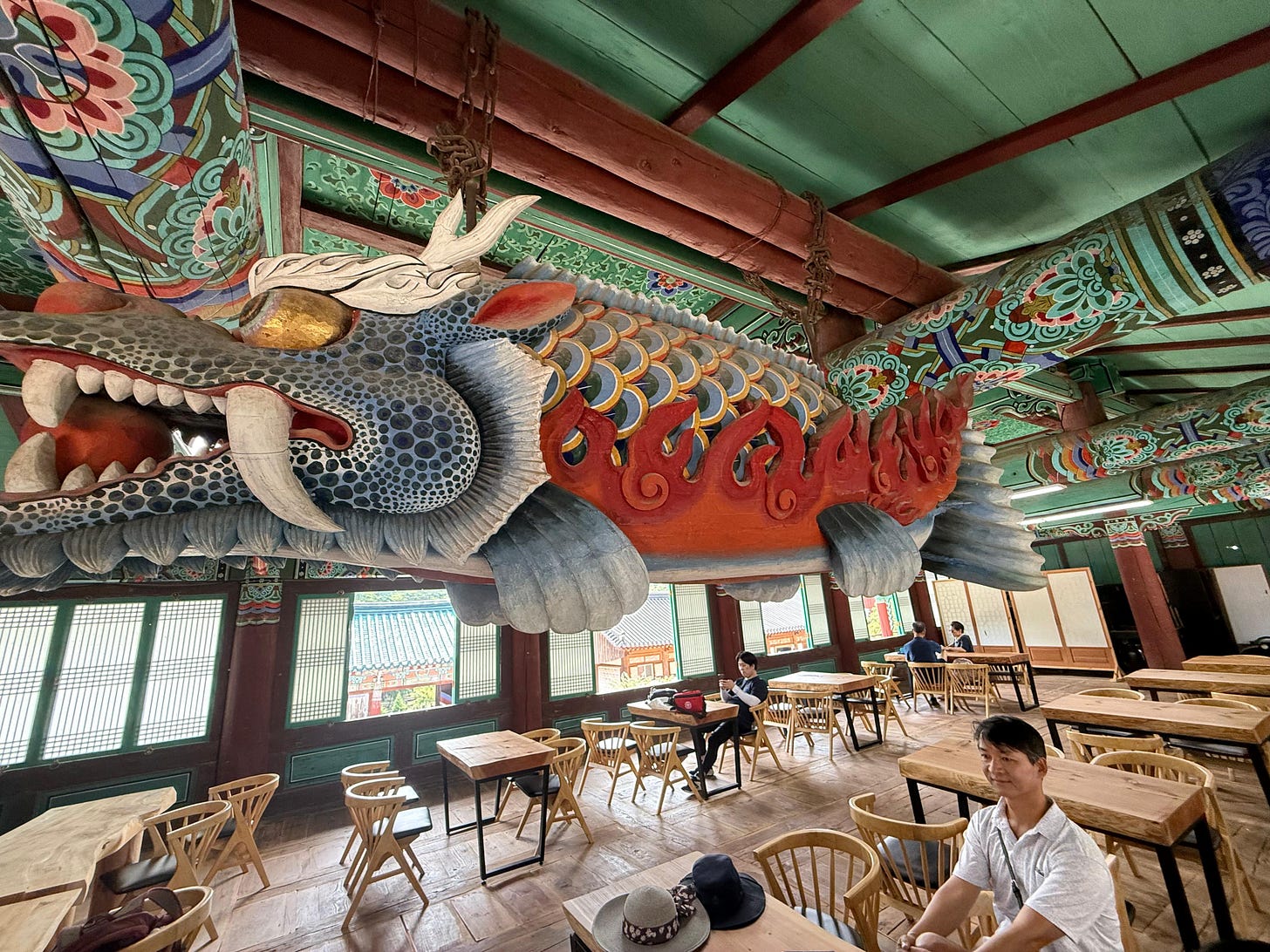
It hung from the ceiling, suspended mid-flight, colourful and beautifully majestic. A wooden sculpture, its sinuous form twisted in motion, as though it might shift at any moment and breathe out stories.
Its body was covered in dancheong patterns, those traditional temple motifs painted in jade, vermilion, ochre, cobalt and white and with each curve and scale lined with colour and intention.
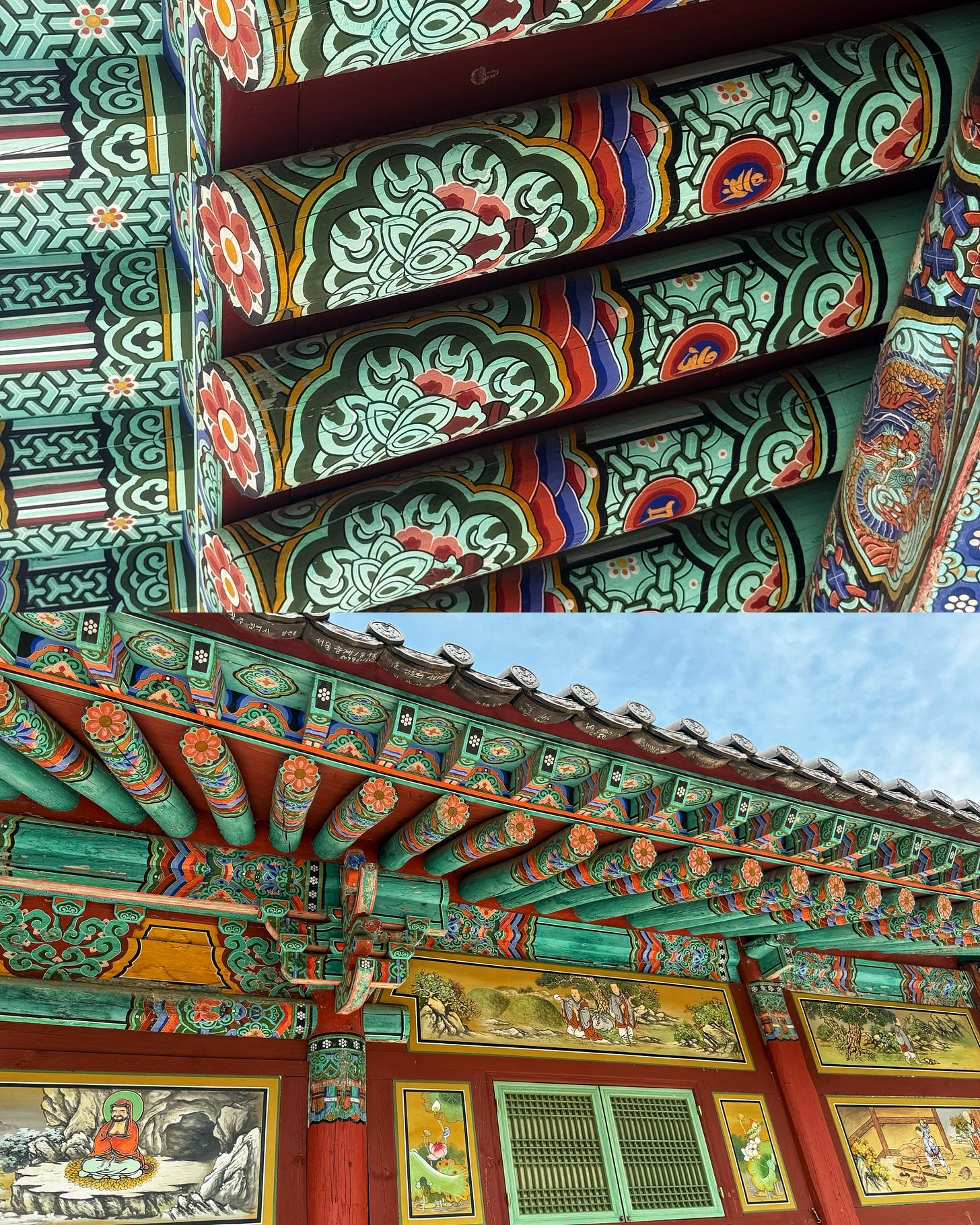
The patterns weren’t merely decorative; they evoked meaning. Protection, prosperity, spiritual guardianship. Even the spaces between the colours seemed to dance.
Beneath it, locals sipped tea in quiet companionship. Steam curled upwards in delicate tendrils much like the cloud motifs which adorned many of the palace ceilings, briefly mingling with the dragon's wooden jaw.
No one looked up, but no one needed to. Its presence was felt. It presided over the room like a myth remembered, not questioned. I watched one man press his palms around a cup of omija tea, his eyes closed, his breath slow, as though the act of drinking was a kind of meditative ritual, not routine.
I sketched the dragon in my mind - my own interpretation, carefully attempting to capture the rhythm of its form. This dragon became a powerful motif in my piece, ‘Dancheong girl.’ I somehow felt the lines in the image in my mind could never quite express the tension it held - between earth and sky, movement and stillness, past and present.
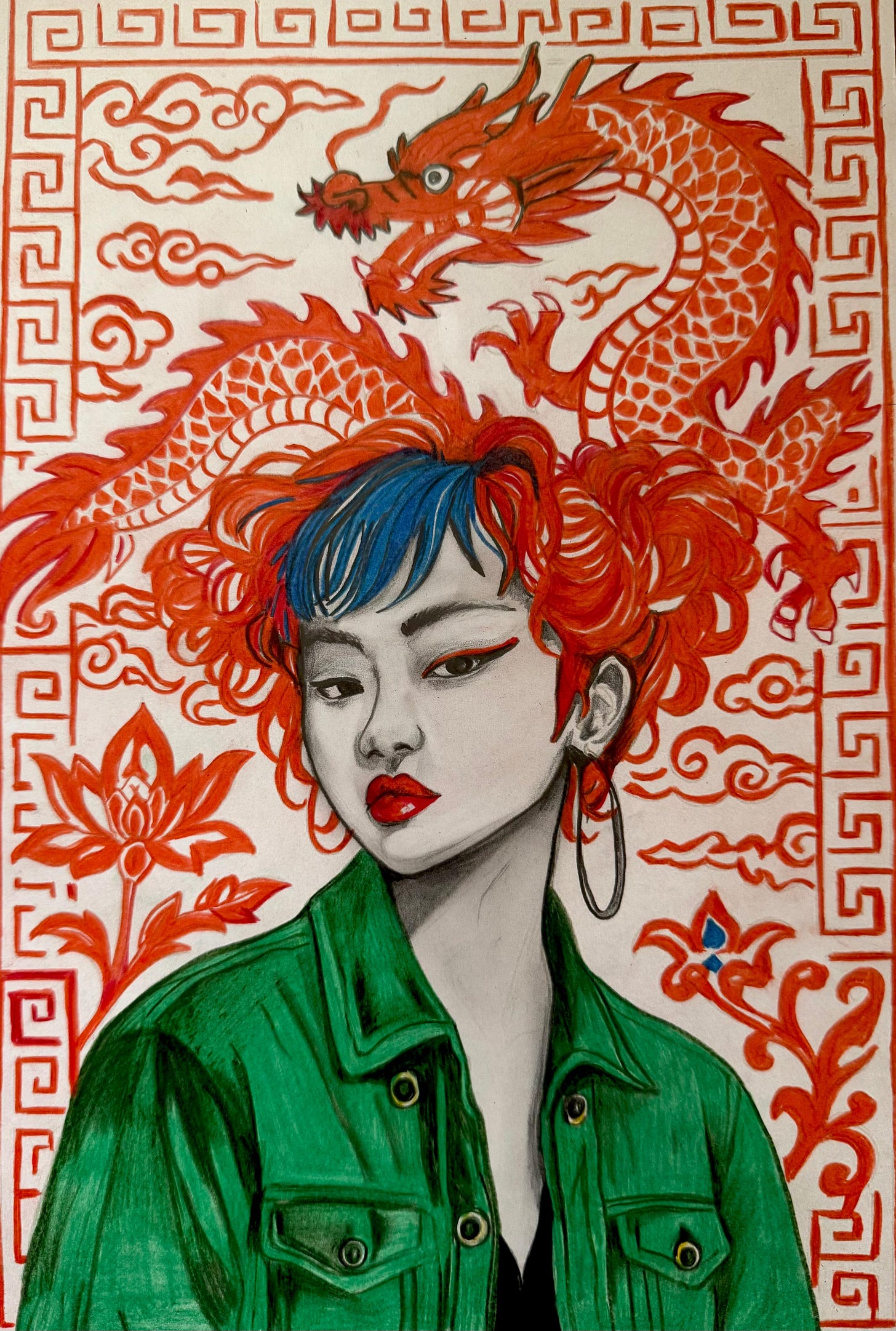
It was a guardian, a symbol, a sculpture, but more than that, it was a conversation between eras. A mythic creature brought down from temple eaves into a contemporary world, and still utterly at home. This beautiful juxtaposition was firmly etched in my mind.
That dragon followed me.
I began to see echoes of it everywhere - painted on the ceilings of Buddhist halls, hidden in murals, etched in metal gates. Always watching. Always in motion.
The dragon wasn’t a monster in Korea. It was a protector. A bearer of rain. A symbol of balance and benevolence. And each time I encountered it, I felt like I was being reminded to look more deeply, to notice, not just at what was in front of me, but what was beneath it.
In the temples, the aesthetic spoke the same language. Dancheong adorned the beams and brackets with impossible precision, drawing the eye upward, calling attention not just to beauty but to ritualistic meaning.
Colours were not chosen at random. Blue for the sky, red for protection, green for growth, yellow for the centre of all things. It felt like every brushstroke had been placed to speak to something eternal.
Even the shadows in Korea had intention. The way light slipped through the slats of a paper door. The way mountains framed the silhouette of a temple roof, sharp yet softened by time.
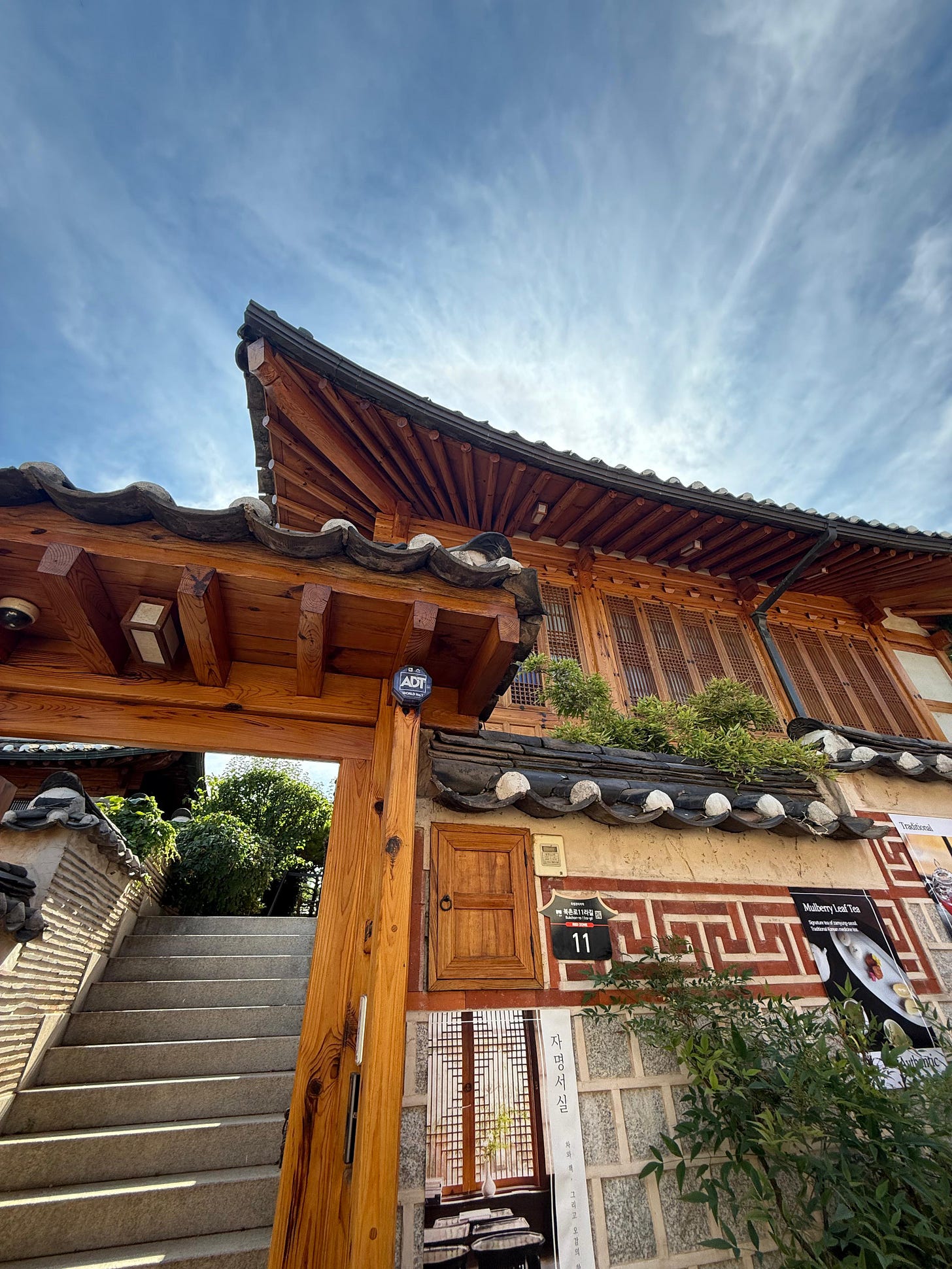
I found myself taking fewer photographs and instead sitting still in retrospect, sketching, not just to capture what I saw, but to fully understand how it felt to truly see it.
In South Korea, sight isn’t just about what meets the eye - it is about what lingers after you close them.
What Stayed With Me
Looking back, what I remember most isn’t one dish or one temple - it’s the people.
From the women in Abai who rebuilt their lives from scratch, to the restaurant owner who quietly placed an extra dish in front of me “just in case,” to the man in his eighties who walked with me for over half an hour just to make sure I found the right palace.
I was met again and again with a kind of grounded generosity. Not loud. Not performative. Just steady and sincere.
Many had lived through division, war, loss. What I saw wasn’t the absence of hardship, but the endurance of spirit.
I began to hear more about han - a word with no true English equivalent, but carrying sorrow, resilience, and quiet, unresolved emotion. I didn’t fully understand it. I’m not sure I ever will. But I sensed it. I sensed it in the stories, the silences, the smiles that lingered a second too long.
Confucian values also run deep, not imposed, but felt in gestures: respect for age, care for the group, deference without submission. A kind of social rhythm, often unnoticed but always there.
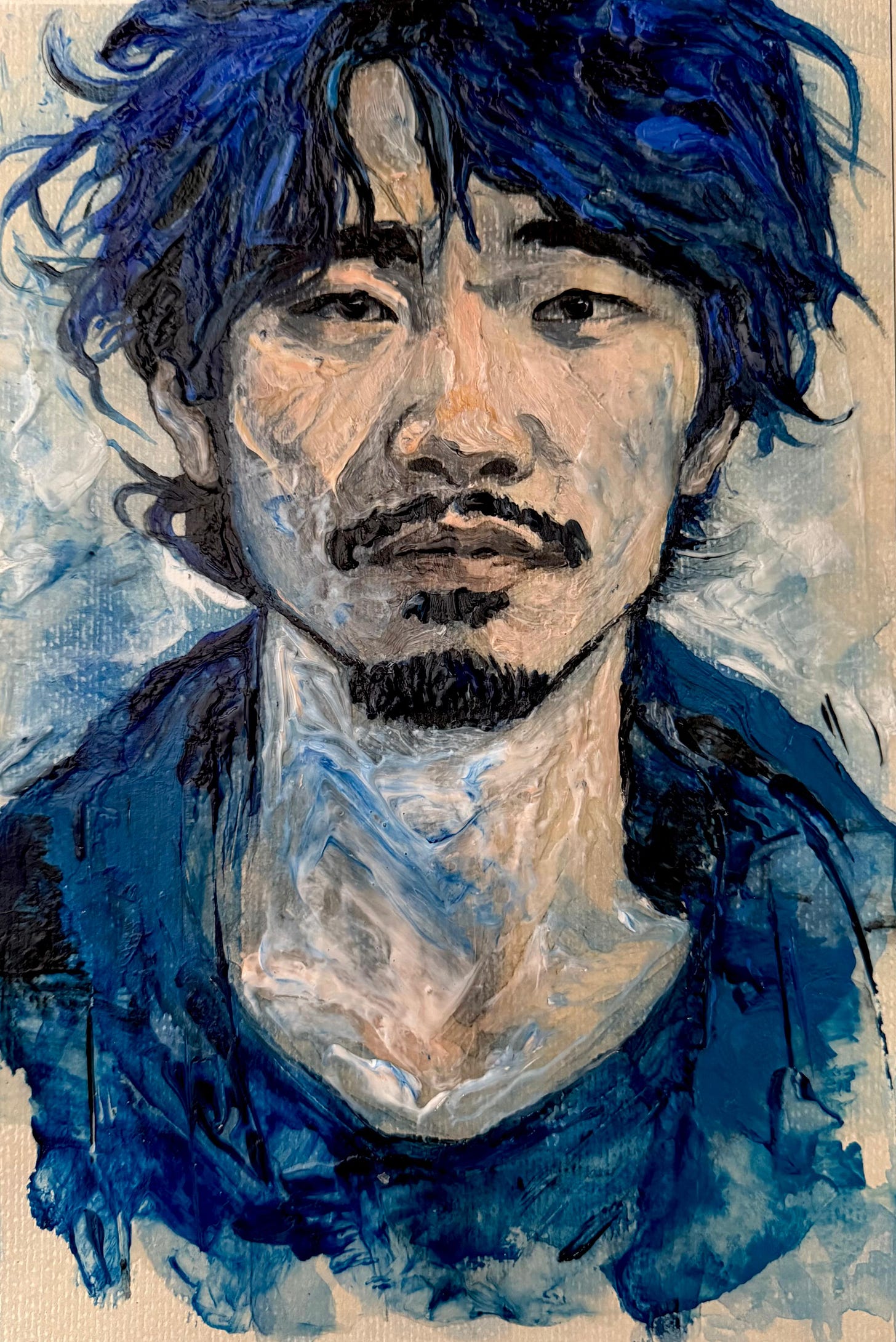
South Korea wasn’t what I expected and I’m glad. It didn’t try to explain itself. It didn’t wrap things up neatly. It held its contradictions in the open.
I left with more than memories. I left with questions, with a quiet admiration, and with a deeper way of noticing - in food, in people, in place.
And I left knowing that there is so much more beneath the surface, still waiting to be understood.
⭐ Read More: Vasavi Koka - Nomad Profile: Art as Travel Inspiration
If you like this essay, please leave a comment or share it with others. This will help more readers find my work. 🦋 Thank you!
Guest Bio: Vasavi Koka is a London trained artist and international art educator, who trained at the University of Cambridge. She is the founder of The Koka Collective, a virtual travel studio sharing drawings and stories inspired by her journeys through 100+ countries. Follow her work here.



Beautifully written.